A Comprehensive Guide to Hydroponic Growing Media: Pros and Cons



A Comprehensive Guide to Hydroponic Growing Media: Weighing the Pros and Cons
Hydroponic gardening has revolutionized the way we grow plants, offering efficient, space-saving, and water-conserving alternatives to traditional soil-based methods. One of the critical components of a successful hydroponic system is the growing medium. Choosing the right growing medium can significantly impact the growth, health, and yield of your plants.
In this guide, we'll delve into the different types of growing media used in hydroponics, exploring their pros and cons to help you make an informed decision.
Qualities of an Ideal Grow Medium:Before delving into the different choices available, let's describe the qualities of an ideal growing medium for hydroponic systems:
- Aeration: Adequate oxygen supply to the plant roots is crucial for healthy growth. An ideal medium should provide ample aeration to prevent root rot and promote optimal nutrient uptake.- Moisture Retention: While it's essential for the medium to provide oxygen, it should also retain moisture to ensure consistent hydration of the plant's roots. Maintaining an appropriate moisture level is vital for plant health and growth.
- Nutrient Retention: The medium should have the capacity to hold and deliver nutrients effectively to the plant roots. This ensures that plants receive a steady supply of essential elements for robust growth and development.
- pH Stability: A stable pH environment is critical for hydroponic systems to prevent nutrient imbalances and maintain plant health. The medium should have a neutral pH or the ability to buffer pH fluctuations effectively.
- Reusable and Sustainable: Ideally, the medium should be reusable to reduce waste and promote sustainability in hydroponic gardening. Reusable mediums also offer cost savings in the long run.
- Versatility: Different plants have varying requirements, so an ideal medium should be versatile enough to accommodate a wide range of crops and growing conditions.


1. Perlite
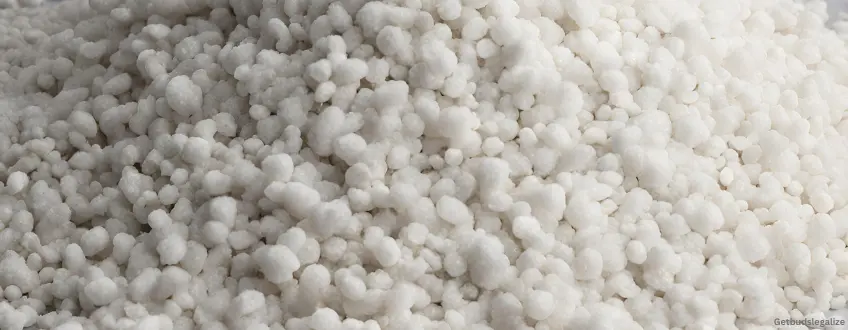
What is Perlite?
Perlite is a naturally occurring volcanic glass that expands when heated, resulting in a lightweight, porous material that is commonly used as a growing medium in hydroponic systems.
Benefits:- Reasonably Inexpensive: Perlite is cost-effective, making it accessible to hydroponic growers on a budget.- Lightweight: Its lightweight nature facilitates easy handling and maneuverability within hydroponic setups.
- High Air Retention: Perlite provides excellent aeration to plant roots, promoting healthy growth and oxygen uptake.
- Reusable: Perlite can be reused multiple times, contributing to sustainability and cost-efficiency in hydroponic gardening.
- Not Suitable for Certain System Types: Due to its lightweight nature, perlite may not be ideal for systems requiring heavier support for plant roots.
- Dust from the Medium: Handling perlite can generate dust particles, which may have adverse effects on both the environment and human health if not properly managed.Suitable Systems:
Perlite is commonly used in drip systems and aeroponic systems, where its lightweight and porous structure facilitates efficient nutrient and moisture delivery to plant roots.
2. Coconut Coir
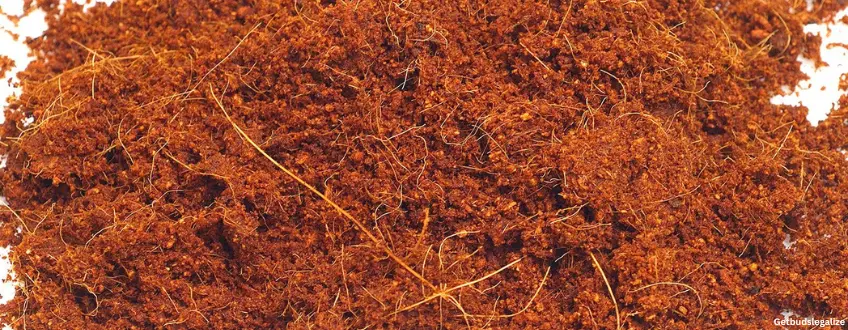
What is Coco Coir?
Coconut coir, often referred to as coco coir, is a natural coconut fiber extracted from coconut husks. It is widely utilized as a growing medium in hydroponic gardening.
Benefits:- Excellent water retention and aeration: Coco coir retains moisture while also providing adequate oxygen to plant roots.- Organic material: From coconut husks, coco coir is environmentally friendly and sustainable.
- Compression over time: Coco coir may become compacted after repeated use, affecting its ability to maintain proper aeration.
- Drainage issues: In some cases, coco coir may not drain effectively, necessitating the addition of other media to improve drainage.Suitable Systems:
Coco coir can be used in drip systems, aquaponic systems, and ebb and flow systems.


3. Vermiculite
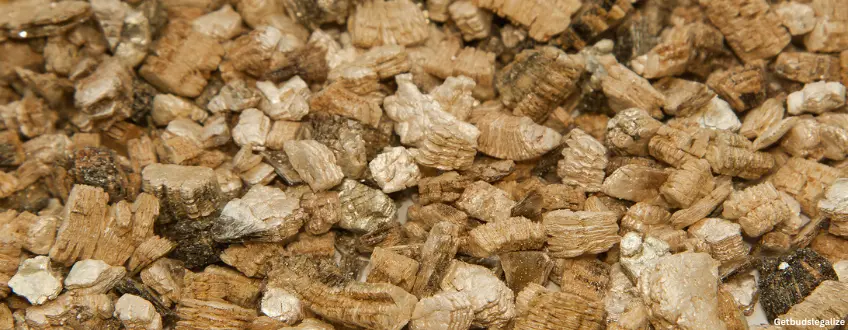
What is Vermiculite?
Vermiculite is a naturally occurring mineral that undergoes expansion when heated, resulting in a lightweight and absorbent material commonly used in hydroponic gardening.
Benefits:- Water and nutrient retention: Vermiculite possesses excellent water and nutrient retention properties, ensuring consistent hydration and nourishment for plant roots.- Lightweight: Its lightweight nature facilitates easy handling and manipulation in hydroponic systems.
- Poor drainage capacity: Vermiculite's high water retention can lead to poor drainage, potentially causing waterlogged conditions detrimental to plant health.
- Danger of suffocating plants: Excessive use of vermiculite may restrict oxygen availability to plant roots, leading to suffocation and reduced growth.Suitable Systems:
Vermiculite is commonly used in systems where drainage is not a primary concern, such as wicking systems, or as a component in soilless mixes for container gardening. However, caution should be exercised to prevent overuse and ensure adequate aeration for plant roots.
4. Rockwool
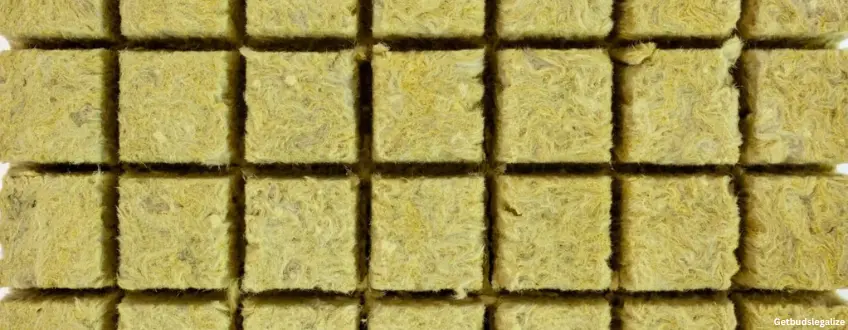
What is Rockwool?
Rockwool is a type of mineral wool made from basalt rock and chalk that is heated to high temperatures and spun into fibers. It is commonly used as a growing medium in hydroponics due to its excellent water absorption and aeration capacity.
Benefits:- Great water absorption and aeration capacity: Rockwool efficiently retains water while also providing adequate aeration to plant roots, promoting healthy growth.- Not environmentally friendly: Rockwool is not biodegradable and may contribute to environmental concerns.
- The dust is not good for health: Handling rockwool can release fine particles that may be harmful if inhaled.
- Disturbs the pH of the nutrient solution: Rockwool has a naturally high pH level, which may affect the balance of the pH of the nutrient solution, requiring adjustment.Suitable Systems:
Rockwool can be used in a variety of hydroponic systems, including drip systems, ebb and flow systems, DWC systems, and NFT systems. It is versatile and adaptable to almost any hydroponic setup except for aquaponics.

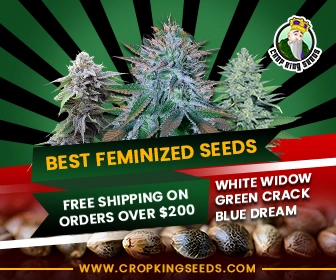
5. Expanded Clay Pellets or Leca
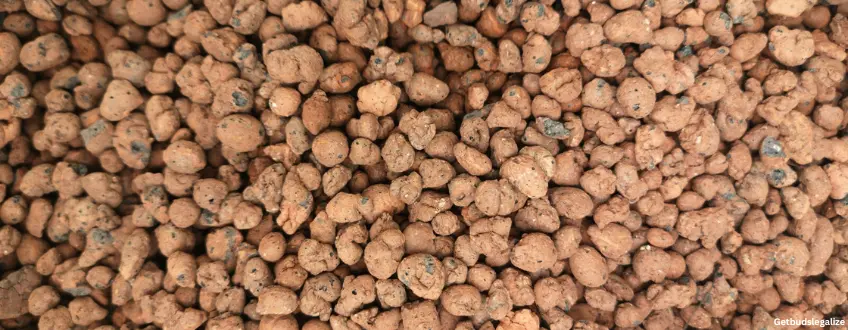
What are Expanded Clay Pellets?
Expanded clay pellets, also known as Leca, are small, porous balls made from clay that have been fired in a rotary kiln. This process causes the clay to expand, creating lightweight, highly porous pellets ideal for hydroponic cultivation.
Benefits:- Reusable, and sustainable: They can be reused multiple times, making them a sustainable option for hydroponic gardening.- Effective water drainage and air retention: The porous nature of clay pellets allows for excellent drainage while also retaining air within the growing medium, promoting healthy root growth.
- Poor moisture retention capacity: While clay pellets excel in drainage, they have a limited ability to retain moisture, requiring frequent watering in some setups.
- More expensive than other growing media: They tend to be more costly compared to some other hydroponic growing media, impacting overall system costs.Suitable Systems:
Expanded clay pellets are versatile and can be used in various hydroponic systems, including drip systems, ebb and flow systems, and aquaponic systems.
6. Oasis Cubes
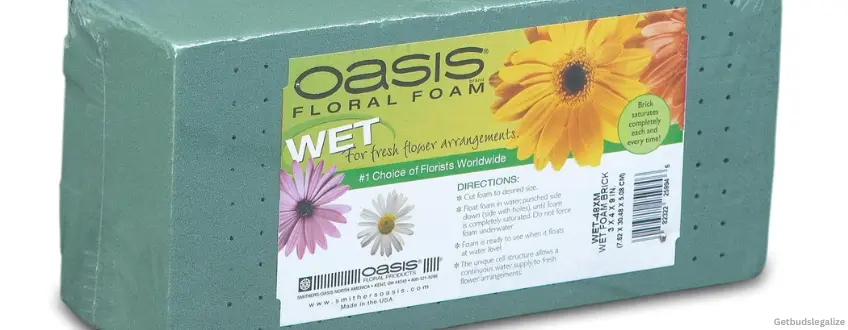
What is Oasis Cubes?
Oasis Cubes, also known as floral foam, are synthetic foam cubes designed specifically for hydroponic cultivation, commonly used during the germination and seedling growing phases.
Benefits:- Inexpensive: They are cost-effective, making them accessible for hydroponic growers on a budget.- Good water and air holding: They provide adequate moisture and air retention, promoting healthy root development.
- Not organic: They are synthetic and do not come from natural or organic materials.
- Not sustainable: Due to their synthetic nature, they are not environmentally sustainable.Suitable Systems:
Oasis Cubes are primarily used for germination and seedling growing phases in various hydroponic systems.


7. Rice Husks

What are Rice Husks?
Rice husks, also known as rice hulls, are the outer covering of rice grains. They are utilized as a growing medium in hydroponics due to their unique properties.
Benefits:- Sustainable: rice husks are a byproduct of rice processing, making them an eco-friendly option for hydroponic growers.- Lightweight: They are lightweight, facilitating easy handling and transportation within hydroponic systems.
- Break down over time: rice husks gradually decompose, leading to a reduction in their structural integrity over extended periods.
- Not pH neutral: They may have an acidic pH, which can affect the overall pH balance of the hydroponic system.Suitable Systems:
Rice husks are suitable for use in various hydroponic systems, including drip systems, deep water culture (DWC), and flood and drain systems.
8. Pumice

What is Pumice?
Pumice is a lightweight volcanic rock that forms when molten lava rapidly cools, resulting in a porous and highly absorbent material used in hydroponic gardening.
Benefits:- Lightweight: Pumice is exceptionally lightweight, making it easy to handle and transport within hydroponic systems.- Excellent air holding capacity: Pumice provides ample space for air retention, promoting optimal aeration for plant roots and fostering healthy growth.
- Lightweight for some hydroponic systems: While its lightweight nature is advantageous in many hydroponic setups, pumice may not provide sufficient support for plant roots in certain systems that require heavier media.Suitable
https://getbudslegalize.com/guide-to-hydroponic-growing-media/
Commenti
Posta un commento